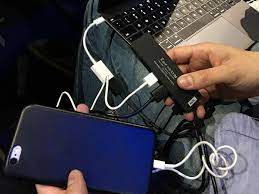How to Buy a Car with Cash: Everything You Need to Know

Introduction:
Purchasing a car with cash can save you thousands of dollars in interest and financing fees, but it can be confusing if you don’t know what steps to take. This guide will provide you with everything you need to know when buying a car with cash.
1. Budget and Save:
Before heading out to shop for your dream car, determine how much money you can afford to spend. Create a budget by examining your income and living expenses. Ensure that your purchase won’t negatively impact your financial situation; also, consider including some additional funds for car essentials such as insurance and maintenance.
2. Do Your Research:
Find the car that suits your needs and preferences. Spend time reading reviews, researching prices, and exploring different makes and models. Used cars are typically cheaper than new ones but consider factors like mileage, depreciation rates, reliability, and cost of ownership while making decisions.
3. Shop Around:
Contact multiple dealerships or private sellers to find the best deals around. Get quotes from various dealers over phone calls or email to compare prices and negotiate terms without physically visiting every dealership site. In addition, inquiring about incentives, discounts, or cash-only promotions can save you money.
4. Inspection:
Before purchasing, inspect the vehicle thoroughly yourself or ask a professional mechanic to help check for any issues or potential problems. Evaluating the vehicle’s condition will protect you against unforeseen repair costs in future and ensure that you pay a fair price.
5. Negotiate the Price:
Cash gives you an advantage in bargaining power as dealerships often prefer immediate payment over financing options given their administrative costs incurred during the loan process. Be confident in negotiating for better prices using the research done earlier along with cash payment leverage.
6. Complete The Paperwork:
Ensure that you have all necessary paperwork on hand when finalizing the purchase. Ask the seller for service records, repair history, and maintenance documentation along with other legal documents like vehicle title and registration. If purchasing from a dealership, request an official sales agreement that outlines all costs and other important information.
7. Paying with Cash:
When making the payment, it is recommended to use a cashier’s check, a bank draft, or an electronic funds transfer instead of carrying around a significant amount of cash for safety reasons. Additionally, notify your insurance provider about the new car to get it covered immediately.
8. Post-purchase Considerations:
Once the ownership transfer is completed, take possession of your new car and arrange transportation if required. Lastly, don’t forget to inform your state’s Department of Motor Vehicles (DMV) about the vehicle sale by submitting necessary forms and updating information on licenses and registration.
Conclusion:
Buying a car with cash might seem intimidating, but with proper planning, research, and due diligence during the buying process, you can save substantial money and embark on a stress-free drive in your newly purchased vehicle.



